Conferences 2025
Config London 2025 – Design is pushing what is possible
For over six years, we’ve been passionate power users of Figma – building, prototyping, and collaborating across teams and time zones.
Last year, we had the chance to experience our very first Config in San Francisco – and shared our thoughts here. This year, Figma brought the magic closer to home with its first-ever European edition in London – an event that had long been on our studio’s bucket list.
Config 2025 was more than just a product showcase – it was a celebration of the global design community, a powerful reminder of how creativity and craft continue to evolve in the digital age but most of all, the introduction of new features. As Dylan stated during the Q&A at Index Venture: “We shipped more product the last year as the previous decade”.
Here’s our personal take on the experience.

Embracing the global design community
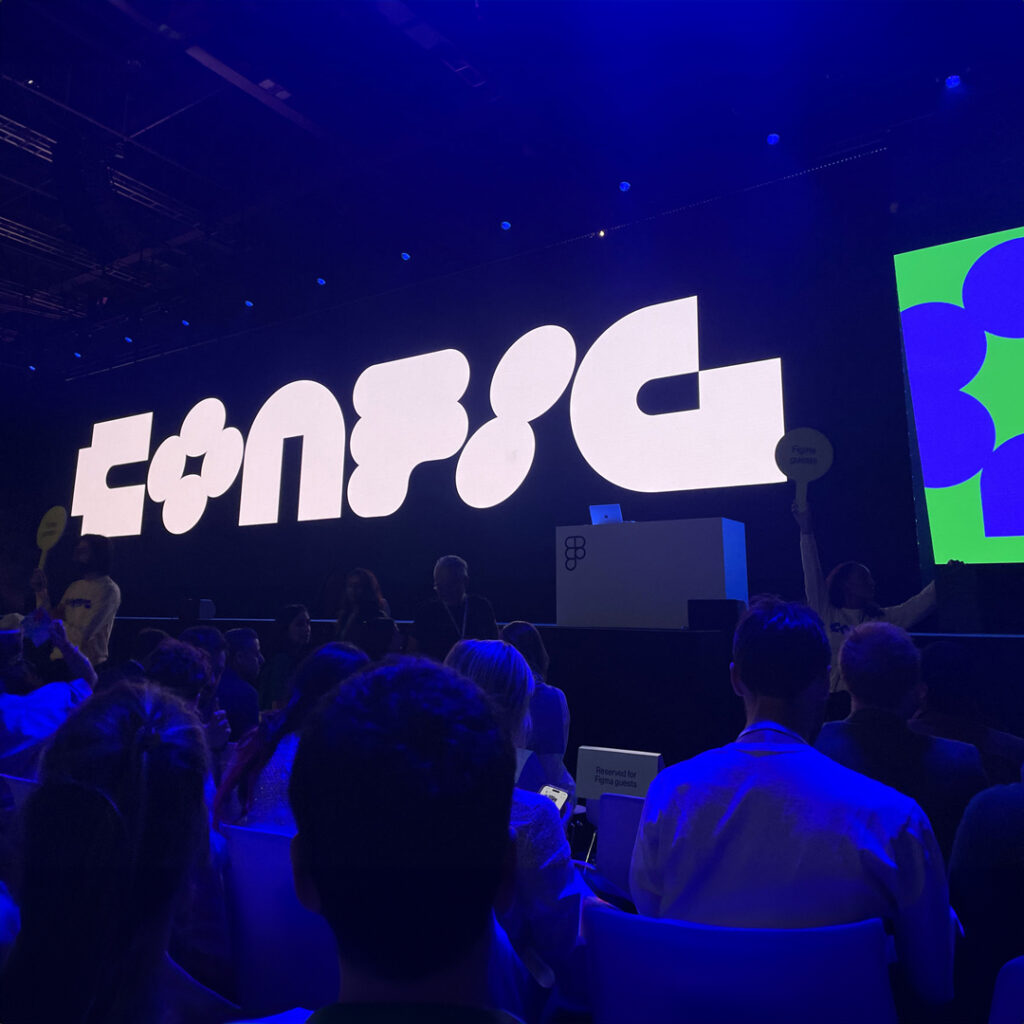
The energy in London was electric. From spontaneous hallway chats to pre-Config events and after-hours meetups, Config 2025 proved once again how tight-knit, ambitious, and generous the design community is.
We met attendees from all over the world – ranging from solo product designers to full enterprise teams – and left inspired by how diverse their creative applications of Figma are used. Some are building physical products that look and feel incredible, using Figma not just for UI but as a core tool in shaping form, function, and brand expression. Even physical products: A good example being the keyboard inspired by Bauhaus from Timothy Achumba, Principal Designer at Microsoft Others shared how a deep understanding of human emotion drives their UX decisions – reminding us that empathy and nuance are still central to great design, even in an increasingly technical space.
Another clear theme: AI was everywhere – not just as a buzzword, but as a real shift in how we generate, iterate, and collaborate. The community is actively exploring the balance between automation and authorship, and it’s pushing all of us to rethink what creativity means.
While Figma’s new products direction is aimed at streamlining the entire idea-to-build workflow (more on that below), the attendees reminded us that innovation often starts from the edges: with curiosity, emotion, and the unexpected.
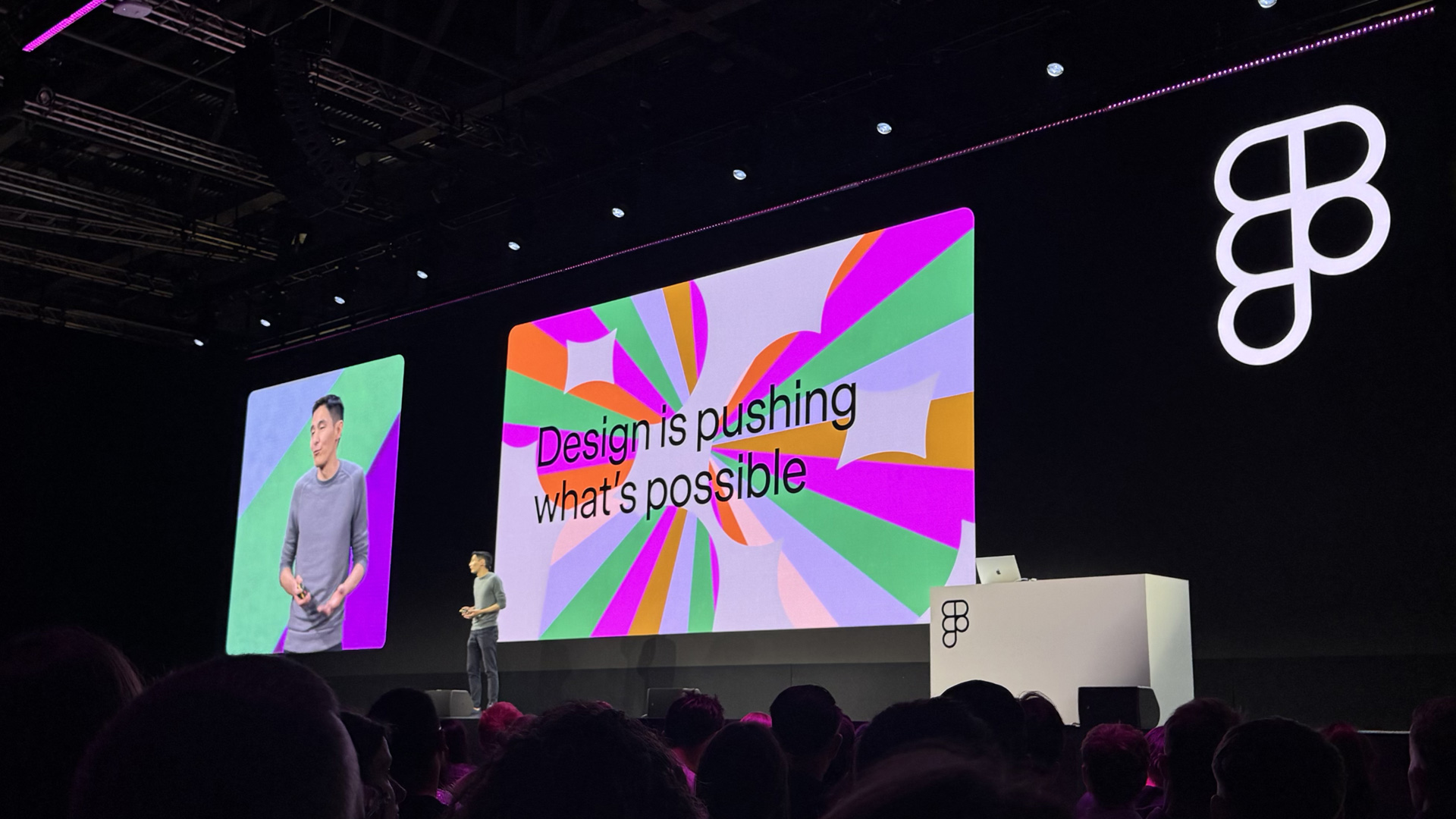
In the product keynote, CPO Yuhki Yamashita – alongside the Figma team—introduced five major updates that aren’t just about features, but about redefining the entire design process. From idea to execution, Figma is positioning itself as a true end-to-end platform.
Here’s what stood out:
New tools that push the limits of design
1. Figma Make
Probably the biggest wow-moment of the keynote. Figma Make turns prototypes into actual product simulations – logic, microanimations, even hardware access baked in. And the wild part? We can do most of it just by prompting.
We’re talking about interactive prototypes that feel real. Mobile to desktop. Microinteractions. AR. Real APIs like Mapbox. And we’re not just designing how things look—we’re shaping how they behave.
With creative tools like Skybox and AI prompting integrated, it feels like a playground for exploration and validation. Make becomes this creative playground where ideas can be tested and validated before you even talk to an engineer.
This might be the first time where prototyping feels like prototyping for real – and not just showing intent. We are very excited to try it out in our working flow.
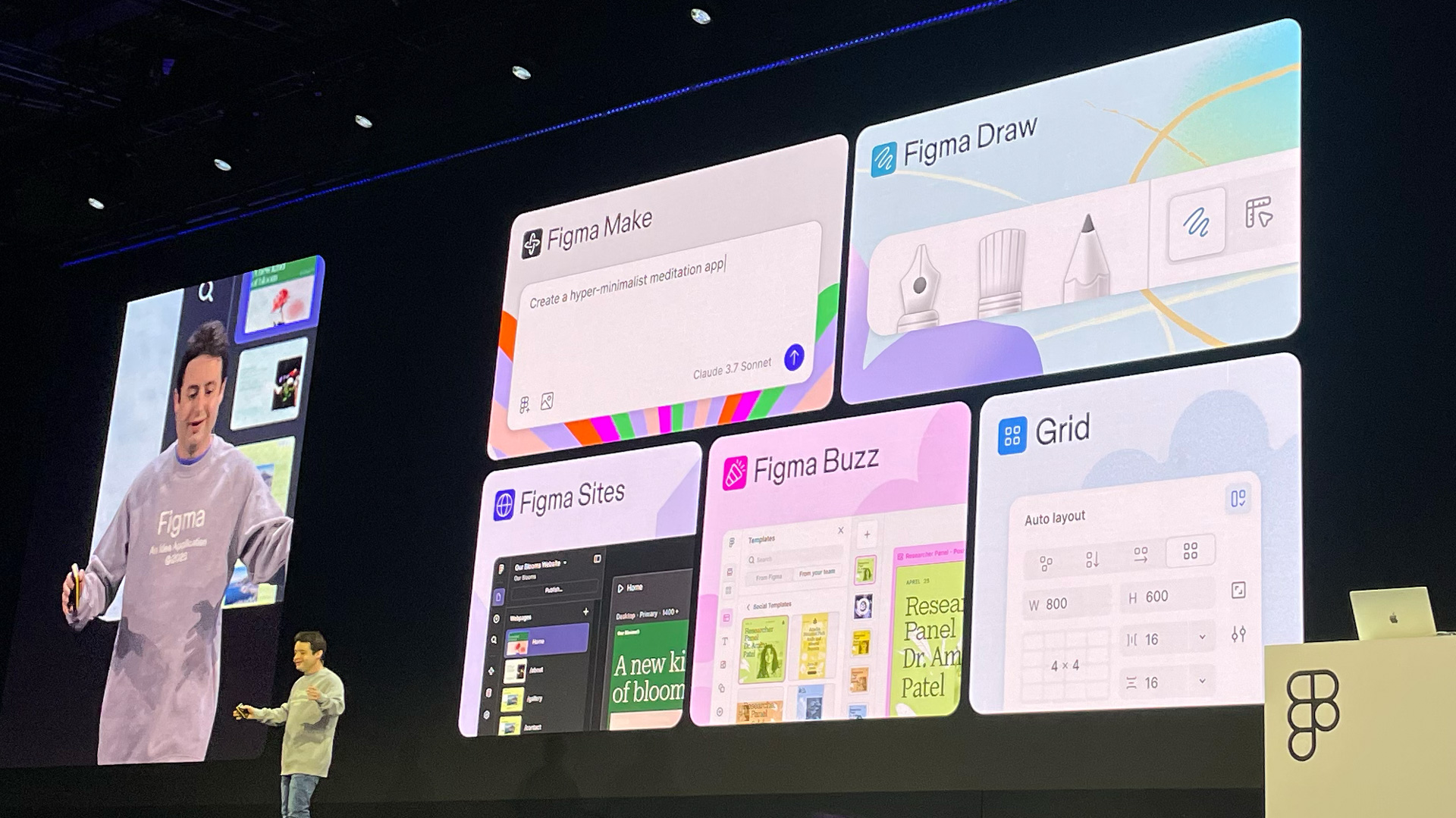
2. Figma Grid
This one might look small on the surface, but definitely caught our attention. Figma Grid seems like a powerful evolution of Auto Layout and is supposed to give us way more flexibility when it comes to structure and responsiveness.
Snapping content into layout is now seamless, drag and drop elements into created grids, work more dynamically with breakpoints, and finally build responsive tables without frustration. It’s a layout system that seems to make sense – and feels more natural for responsive, and multi-platform design.
3. Figma Site
Figma Site closes the gap between design and code. We can now publish production-ready websites directly from your design file – with real HTML, CSS, and JavaScript.
It supports responsive layouts with breakpoints, and includes pre-composed content blocks and web interactions like lightbox, draggable elements, and parallax effects.
There’s even a code layer you can tweak, with AI helping generate properties automatically.
It’s not about replacing our dev team, but about giving us designers a faster way to build things that actually work: clean responsive behavior, and interactions like lightboxes or parallax, all powered by precomposed blocks and AI-generated styles.
It’s early days, but we’re already thinking: microsites, pitch pages, documentation hubs – why not just hit publish? This might be a game changer for us designers.
We’re curious to see how Figma Sites reshapes the bridge between design and development. Can turning high-fidelity designs into production-ready structures really become that seamless? If so, this could be a major shift in how teams ship ideas faster — and smarter.

4. Figma Draw
Hand-drawing is now native to Figma. Sketch, annotate, or rough out ideas directly into our Figma canvas – with texture effects, pattern generators, and a new Repeater feature that makes illustration creation easier.
It’s still in beta, but the potential is clear. As we shared on LinkedIn right after testing it:
“The ability to hand-draw directly in Figma is super handy and definitely shortens the workflow.
It fits well with Figma’s mission to become an end-to-end design tool (sorry: idea application 😉).”
While it’s not as fluid as raster-based tools like Procreate yet, Draw already adds value for quick ideation and creative AI prompting. We’re especially curious what this could unlock once iPad + Apple Pencil support goes beyond view-only mode.
5. Figma Buzz
Figma Buzz introduces a Canva-like editor for teams. We can now bulk-generate production-ready assets using templates, and still let others edit with the design intent intact. This could drastically improve how designers hand over assets to non-designers – without compromising brand consistency.
Talks That Made Us Think
Challenging UX Norms: Ningfei Ou's Call for Ethical Design
Ningfei Ou, a content designer at Google, delivered a thought-provoking session titled “Stop with the dirty tricks: confessions of a UX skeptic.” He critiqued common manipulative design practices and advocated for a more ethical approach to user experience. His talk serves as a reminder of the responsibility designers have in shaping user interactions.

A deep dive into basic human emotions highlights the urgent need for responsible UX design that avoids user manipulation – a view we fully support.
From Pixels to Products: Timothy Achumba's Journey into Physical Design
In his talk, Timothy Achumba, Principal Design Director at Microsoft, shared how his passion for mechanical keyboards led him from software design into the realm of physical product creation. Leveraging Figma, he was able to prototype and manufacture custom keycaps, demonstrating that digital design tools can effectively bridge the gap to tangible products. His journey underscores the potential of familiar tools in exploring new creative avenues.
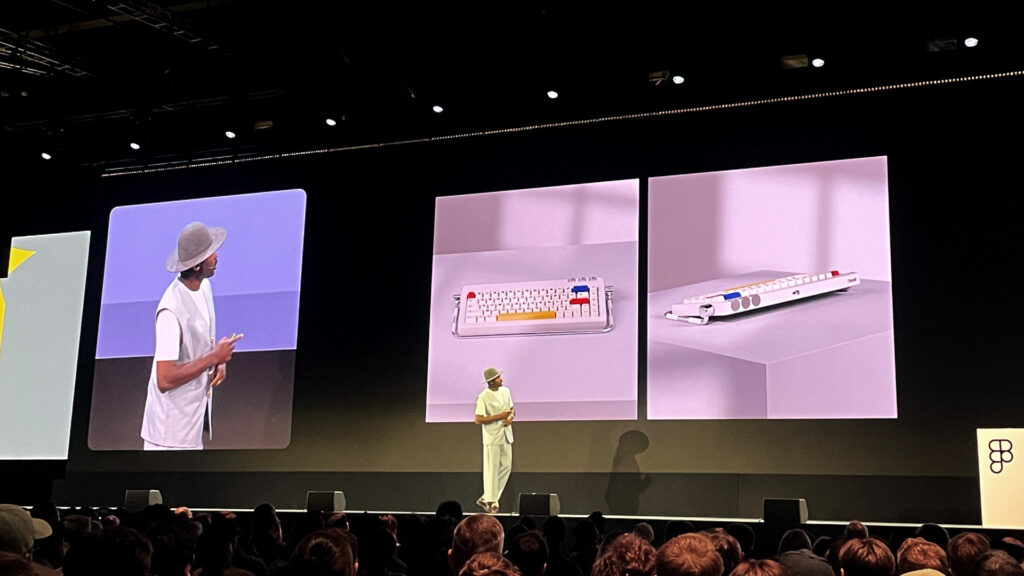
Reimagining Brand Identity: Lloyds Bank's Digital-First Approach
Vishal Kapoor and Kishan Koriya from Lloyds Banking Group discussed the bank’s transition to a digital-first brand identity. They highlighted the challenges of modernizing a legacy brand and the strategies employed to ensure consistency across digital platforms. Their insights provide valuable lessons for designers working on large-scale rebranding projects, not only transforming designs but also a company mindset.
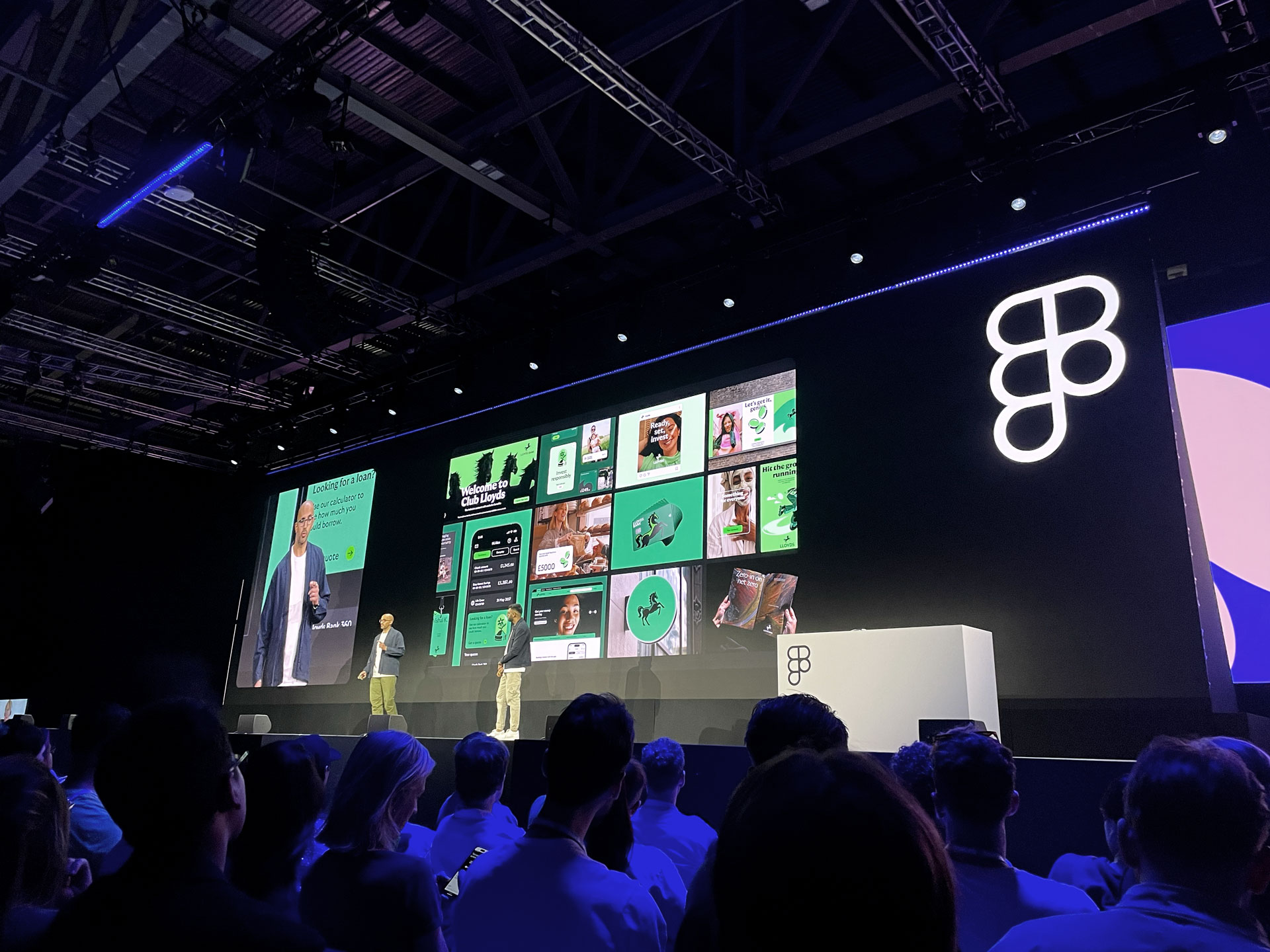
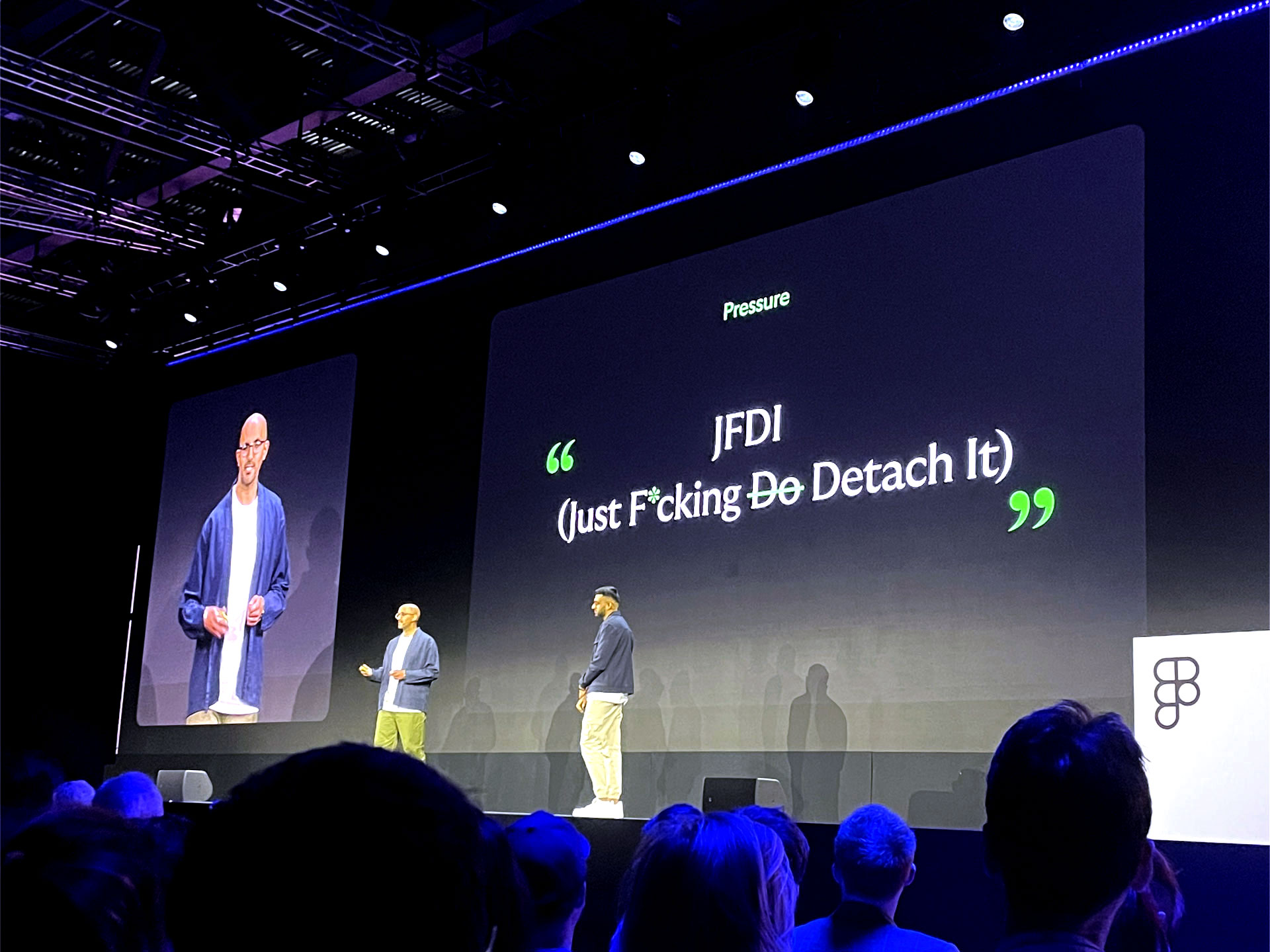
Modern Color Systems: Dan Hollick on Tailwind CSS's Palette Evolution
Dan Hollick, Design Engineer at Tailwind CSS, provided an in-depth look at the evolution of Tailwind’s color palettes to accommodate wide-gamut displays. He discussed the technical considerations and tools developed to ensure color consistency and accessibility across modern web platforms. His session offered practical insights for designers and developers working with advanced color systems.
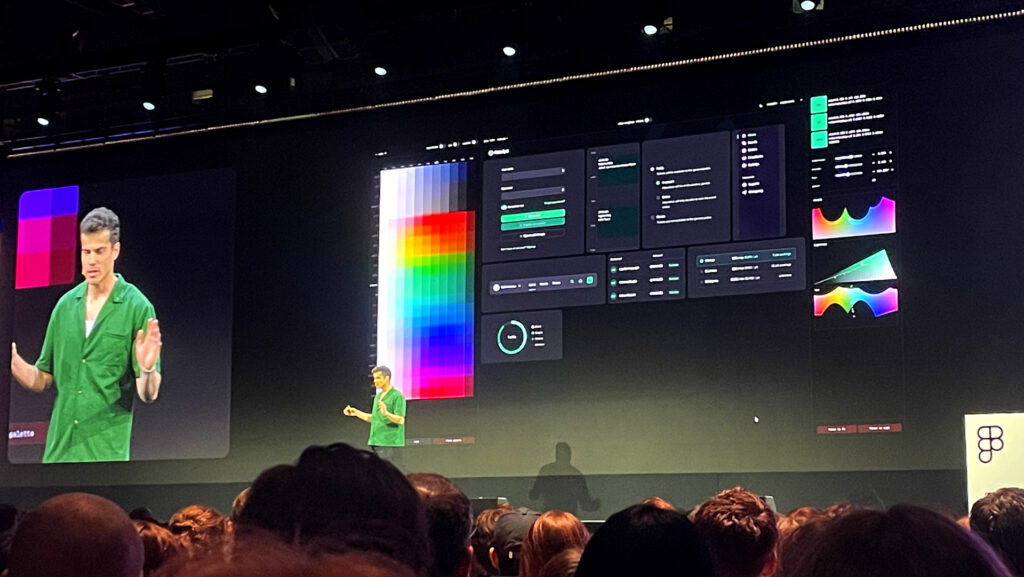
Wrap-up
Config London 2025 wasn’t just about what’s new – it was about what’s next. The tools we use are evolving quickly, but so are the ways we think, collaborate, and build. As Figma continues to blur the lines between design, code, and conversation, we're excited – and honestly a little challenged – to rethink our own workflows. Big thanks to everyone we met, chatted with, or debriefed alongside in London. We’re already looking forward to the next one.
We hope you’re enjoying our insights from Config London 2025.
If you want to discuss on howwe work with Figma and what our take on responsible UX Design is, drop us a line.

We are a design and innovation studio creating engaging, accessible digital experiences for everyone. Our team of product designers and strategic consultants combine beautiful design and creative strategies to build and promote user interfaces that make a real difference to people’s lives.
Jetzt abonnieren
Unser Newsletter liefert exklusive Einblicke, spannende UX-Insights und aktuelle Projekt-Updates direkt in Ihr Postfach.
